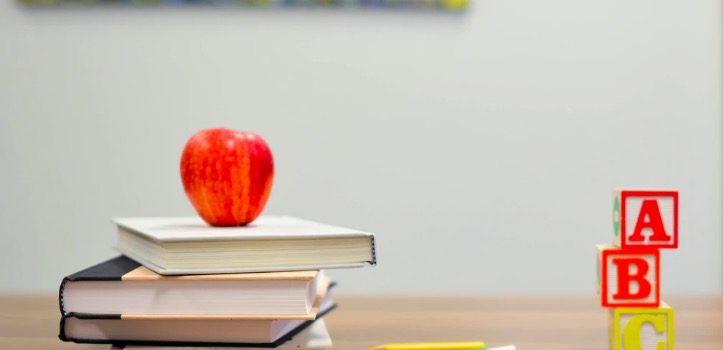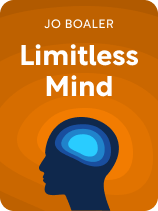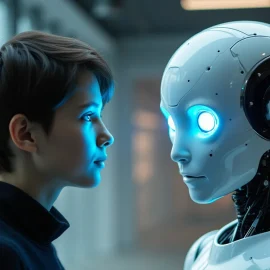

This article is an excerpt from the Shortform book guide to "Limitless Mind" by Jo Boaler. Shortform has the world's best summaries and analyses of books you should be reading.
Like this article? Sign up for a free trial here.
When students struggle, what if we took advantage of that difficulty rather than trying to “fix” it? What’s a productive alternative to marking test answers as wrong?
In Limitless Mind, math educator Jo Boaler shows that the brain is capable of learning new skills and incorporating new ideas throughout our lives and that struggling to learn and making mistakes are integral parts of cognitive growth. With this in mind, she urges us to rethink education.
Keep reading to learn several education reform ideas put forth in Boaler’s book.
Education Reform Ideas
It’s one thing to understand the theoretical basis of how to boost learning, but it’s another to put it into practice. Throughout her book, Boaler gives advice to parents, teachers, and school administrators about how to rethink the education system so that it can better serve the needs of its students. Her education reform ideas include celebrating when students work through their challenges, encouraging them to freely make mistakes, using textbooks as merely jumping-off points, and guiding students through effective collaboration.
While such an understanding can help students’ self-confidence, there’s a deeper lesson to be taught. Teachers and parents need to tell students that making mistakes and working hard to correct them is the process by which the brain gets stronger. Students’ efforts must be praised, but, in addition to that, teachers must offer productive guidance on how students can improve. Instead of steering students toward subjects where they’re strongest, educators should target the areas in which students have the most problems. In order to dislodge our cultural notions that having difficulty learning is something to be ashamed of, teachers and parents should demonstrate that even they don’t know it all and still have things to learn.
(Shortform note: Boaler’s discussion focuses on the classroom, where it’s the teachers’ and parents’ responsibility to help students work through their difficulties, but once you’re an adult, the duty of identifying and overcoming your weaknesses falls to you. In Ultralearning, Scott Young argues that when learning a new skill for your job or to meet a personal goal, you should isolate the weakest spot in your learning process and design a process to overcome it. By targeting an area that’s holding you back, pushing through and mastering your weakest area can unblock a flow of related skills and knowledge that should come to you much more easily.)
Since making mistakes is a vital part of learning, we have to stop penalizing students for not getting everything right the first time. Boaler suggests replacing fixed test scores with practical feedback on how students can improve. For example, instead of marking answers right or wrong, teachers could point out what students understand and where they still need work. However, because our education system revolves around test scores as a way to measure progress, teachers and administrators will have to work hard to implement changes that don’t punish students’ imperfections. Changing how learning is measured in schools can drive home the message that it’s the process that matters.
(Shortform note: A particularly punitive form of testing in schools are the standardized tests used to determine students’ placement in classes and eligibility for college. In the US, the No Child Left Behind Act used standardized tests as a way to determine which schools received funding, penalizing whole schools whose students underperformed. Critics of testing argue that it places too much weight on a single unit of measure, resulting in schools spending inordinate time preparing students for the test and not on actual learning of the kind that Boaler promotes. Alternatives to standardized tests include student record assessments, random class samples, and performance exams based on student projects, all of which are hard to implement.)
Another challenge teachers face is the textbooks they’re assigned, which are designed with problems and questions that promote easy answers, shallow learning, and memorization. Boaler says that math textbooks are particularly egregious in the way they present long lists of problems to be solved quickly by memorized methods, not considered deeply from a variety of angles. Her advice to teachers is to not feel shackled by the book. Instead, she suggests choosing only a handful of problems from the text and challenging students to solve them using a variety of different approaches (numerically, visually, conceptually, and so on) so that they can understand the underlying principles and form new neural connections.
(Shortform note: The problems Boaler points out with math textbooks are nothing new. In his memoir Surely You’re Joking, Mr. Feynman!, Nobel laureate Richard Feynman recounts that when he agreed to review math textbooks in the 1950s, he was shocked that the books were full of abstract concepts with no real-world applications and would thus discourage learning instead of providing a real-world foundation for knowledge. Current studies show that in math textbooks, fewer than 1% of the exercises cover any practical use of mathematics and that many aren’t vetted for their efficacy at developing math skills.)
The final key is to teach students the value of collaboration, which goes against the grain of the stereotypical group project in which the “smartest” student ends up doing all the work. Boaler recommends that each group session begin with each student sharing their ideas. The purpose of group exercises should be to show how each student approaches a problem differently. Doing so can open up students’ eyes to the value of multiple perspectives and can even help them build connections across social, ethnic, and gender boundaries. Such activities not only grow each student’s learning, but over time they can be a step to heal divides within society at large.
(Shortform note: Boaler downplays the ways in which group projects can go wrong, particularly when one student ends up doing the brunt of the work. However, there are ways to make collaboration effective, as elaborated on by Kim Scott in Radical Candor. Writing in terms of adult collaboration, Scott lists several steps to maximizing collaborative effort, including listening to everyone in the group, debating ideas, deciding on an overall direction, and making sure that what’s decided is put into action. Teachers could use a framework similar to Scott’s to teach students how to collaborate on projects before engaging in group work.)

———End of Preview———
Like what you just read? Read the rest of the world's best book summary and analysis of Jo Boaler's "Limitless Mind" at Shortform.
Here's what you'll find in our full Limitless Mind summary:
- Why everything you thought you knew about natural abilities is wrong
- Why attitude is more important than aptitude when it comes to learning
- How to apply the science to boost your learning






